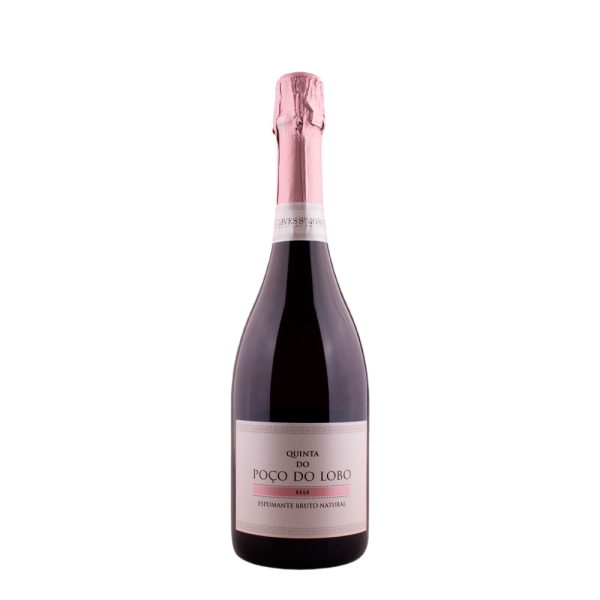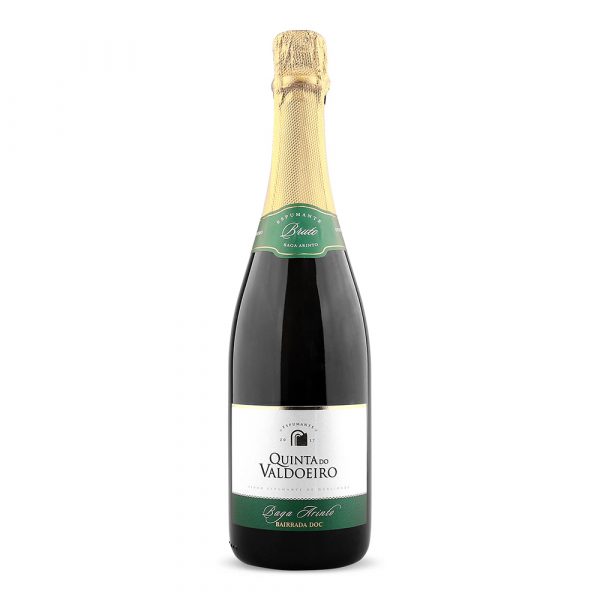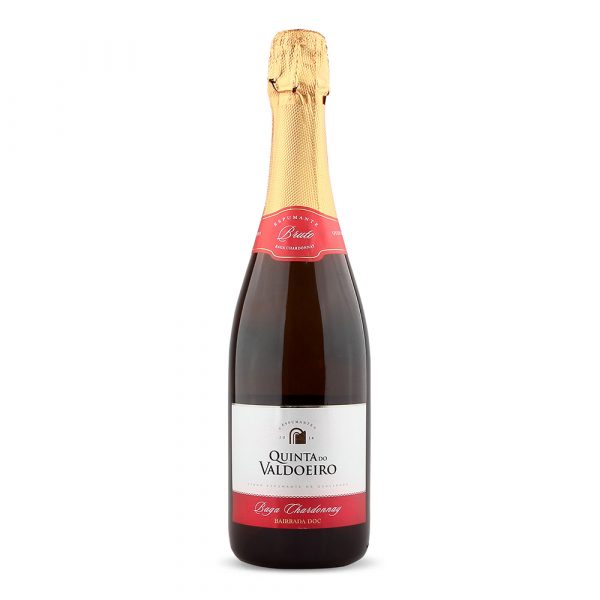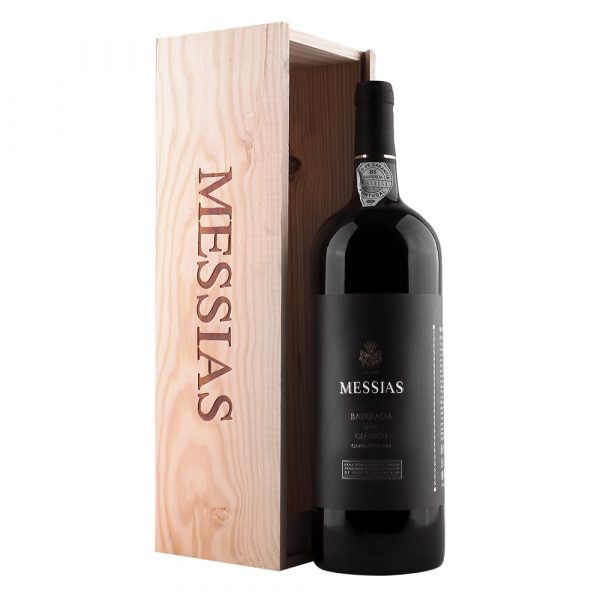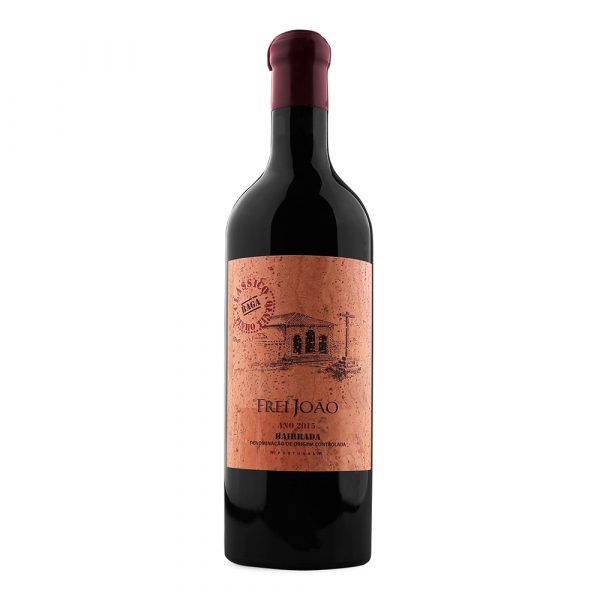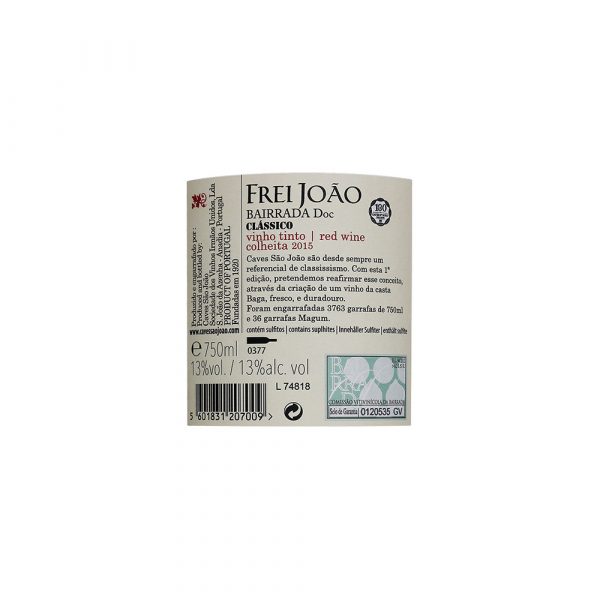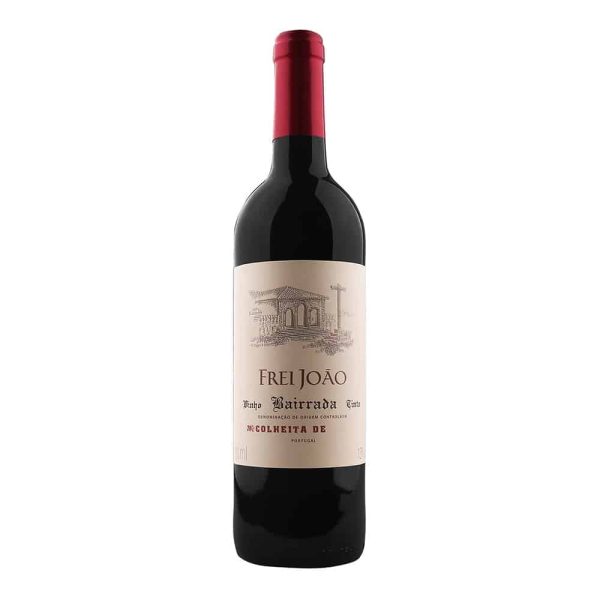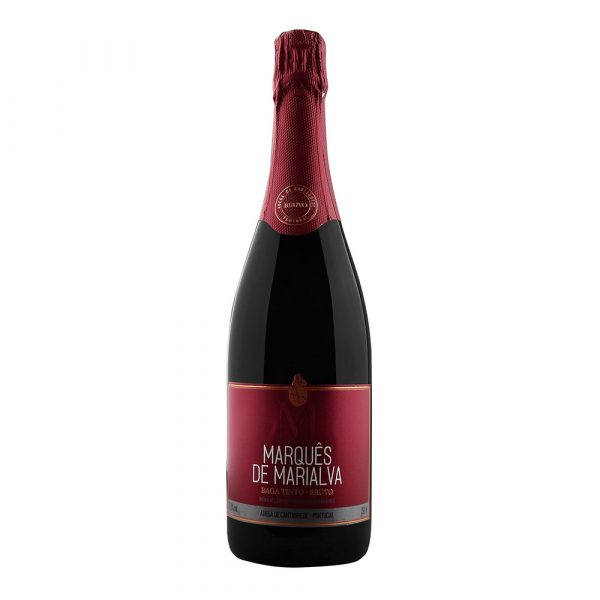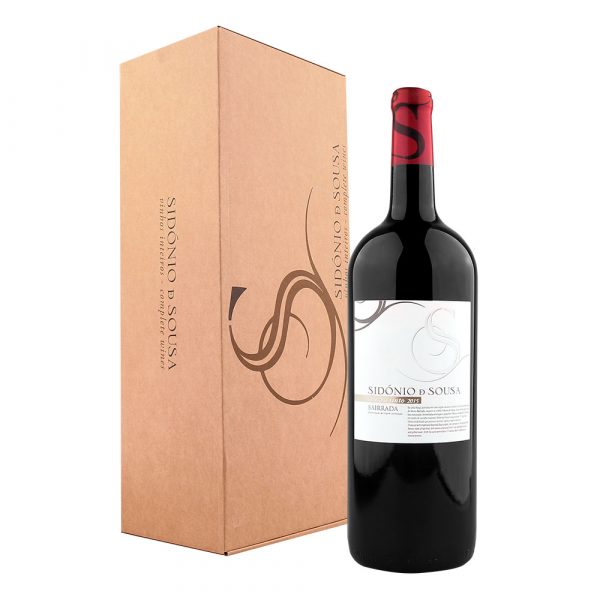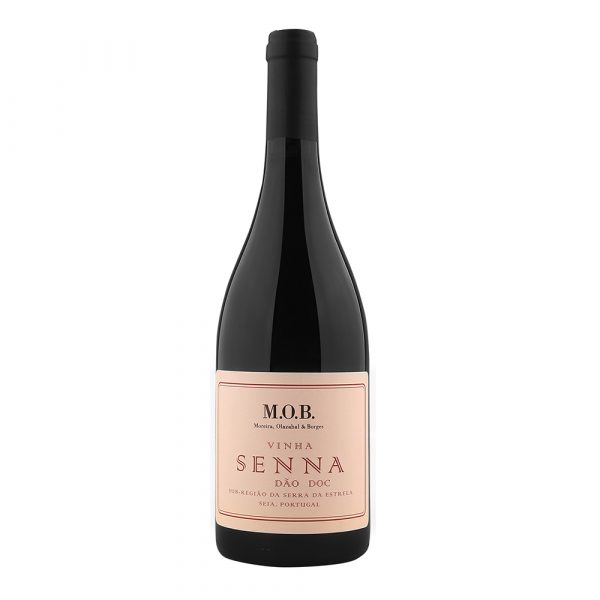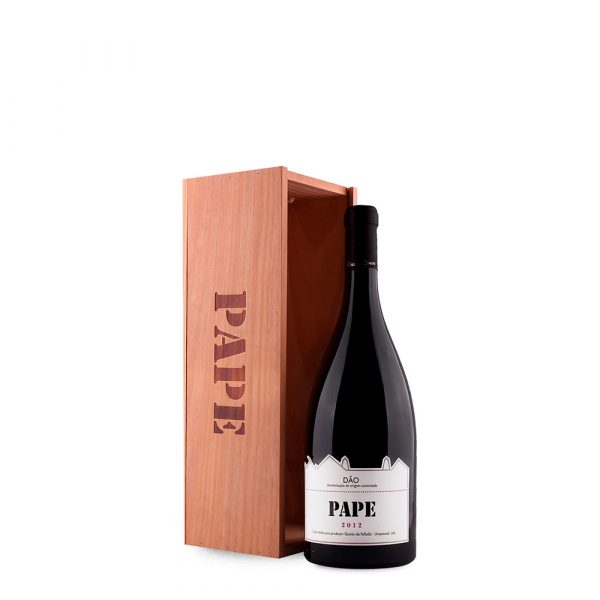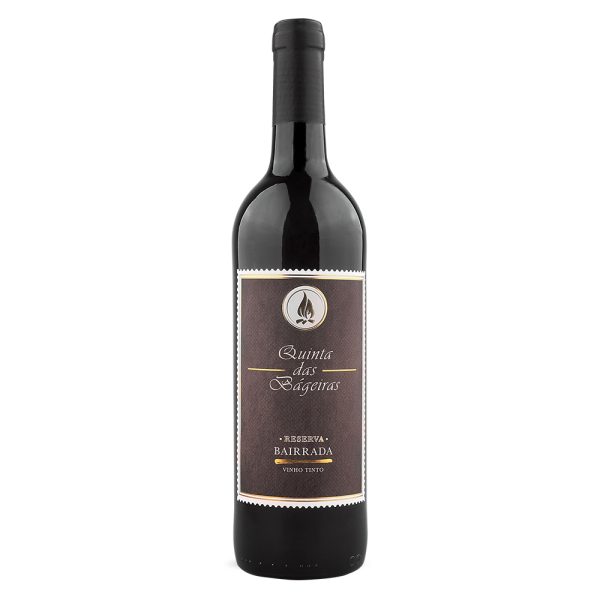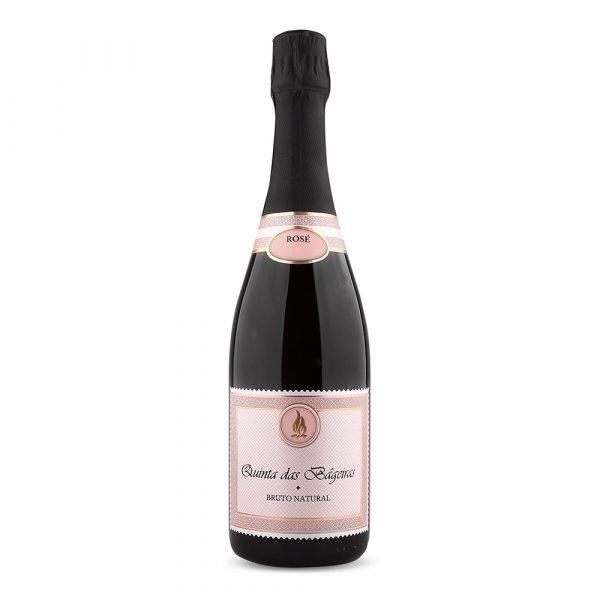Quinta do Poço do Lobo Baga Pinot Noir Rose
After a very delicate pressing of the grapes, the must was fermented for 15 days in stainless steel vats at controlled temperature. This was followed by extraction with free yeasts, with re-fermentation taking place in a cellar for 25 days at 14 ºC, followed by a 60-month aging period in bottle on lees. Pink color defined with hints of onion skin, aromas of acidic red fruits, buttery notes, evident toasted notes and beeswax, among other aromatic notes of a rich and complex palette. It has great gustatory complexity, very fresh attack, and excellent texture. The mousse is creamy and has good gustatory persistence. Contains sulfites.
Quinta do Valdoeiro Baga Arinto Bruto White
Quinta do Valdoeiro Baga Chardonnay Bruto Red
Pale gray pink color. Predominantly mineral aroma, with strong nuances of red fruit and bread notes. This sparkling wine with a fine bubble and sparse sparkling, shows a delicate mousse with a mild stimulus, reminiscent of cherries, strawberries and biscuits. Crunchy acidity, giving lightness to Boal. Contains sulfites.
Messias Garrafeira Magnum Red
Partial destemming of the grapes prior to their entry into the mill, where they were trampled on foot for 6 days. Finishing of the alcoholic fermentation in vinous French oak barrels.
The 2-years-wood stage in followed by another year of bottle tuning in the cave. Intense ruby color. Characteristic Atlantic wine, where balsamic nuances of resin and cedars are involved wirh iodized and saline sensations. Huge structure and great potential for aging. Contains Sulfites.
Frei João Clássico Red
This wine originated in a plot of vines of the Baga variety, subject to very careful and rigorous cultural practices, taking into account the sensitivity of this variety. The grapes were hand-picked and carefully vinified with complete maceration, in a mill with a pneumatic crusher. After malolactic fermentation, the wine aged for 18 months in 500 liter French oak barrels and then 12 months in a cement vat, benefiting from the thermal inertia of this, as has always been a tradition in our house, to guarantee the natural stability of the wine. It was bottled, without being subjected to any clarifying or stabilizing treatment, and then aged in the bottle for 3 years. Ruby color, very fine and elegant, with notes of resins, pine needles, black fruits, dried figs, hay and spices, typical of the variety and complexed by nuances of wood. In the taste, the freshness, structure and olfactory-gustatory persistence stand out. In the mouth, the same aromatic sensations of direct nasal olfaction are perceived. Tannins present but tamed. Very suitable for bottle aging. Contains sulfites.
Frei João Colheita Red
After manual harvesting, rigorous selection and total destemming, the grapes macerated for about a week in vats and presses with a pneumatic crusher at 27ºC. At the end of the malolactic fermentation, the wine matured for a long time in stainless steel and cement vessels. It was bottled after minimal clarification. Garnet color, complex aroma, with fruity, spicy, roasting and dry vegetable notes. Structured, fresh, full-bodied and long flavor. With tannins present but tamed. Contains sulfites.
Marquês de Marialva Baga Bruto Red
Total destemming, prolonged and smooth skin maceration with fermentation at 24 ºC. Foaming by the classical method. Minimum of 9 months in basement and 1 month after degorgement. Intense garnet ruby color with hints of violet tones. Mixed aroma of fresh red fruits and dark petal flowers. In the mouth it is fruity, enveloping body, elegant, harmonious finish. Contains sulfites.
Sidónio de Sousa Reserva Magnum Red
Crushing with destemming and cooling of the grapes in the winery in small open wineries (a tank in which the grapes are squeezed, reducing them to liquid). Where the skin maceration begins and later the fermentation, without addition of enzymes and yeasts. The step is done manually with wood masses to increase a greater extraction of the vinous characteristics of the Baga variety. Contains Sulfites.
Mob Vinha Senna Red
It comes from the vineyards of Seia, vinified in mills and stainless steel tanks with little extraction and low temperatures. It staged for 12 months in oak barrels with 30% new and the rest used. It is a wine of beautiful violet color without being opaque; has an intense and complex aroma, full of character and delicacy. In the mouth, it has a strong presence, but is very fresh and smooth. A seductive darn velvety texture and great depth that will grow immense in the bottle in the coming years. Contains Sulfites.
Quinta da Pellada Pape Magnum Red
Quinta das Bágeiras Reserva Red
Some of its Baga grapes come from old vines, but in years when there is no red wine cellar and there is a red reserve, all the grapes from the old vines are intended for this wine. These grapes are fermented between 5 to 8 days in open winery and without destemming (the berries are not removed from the bunch). Then a reassembly is done with wood masses several times a day until they reach the correct intensity. Then the wine finishes the fermentation in old wooden barrels. While it rests it is cleaned and it stays in the same barrels about 18 months. It is bottled without any glue or filtration. All these processes are done manually. Contains Sulfites.
Quinta das Bágeiras Bruto Natural Rose
The grapes of this sparkling wine are obtained from a second vintage of the most suitable vineyards to create Baga grapes for a rosé sparkling wine. It is vinified from open spout, the wort being placed in small decanters of 1m³ where it remains between 24 to 36 hours to make the decanting through natural precipitation. At the end of this process, the wort is transferred to stainless steel tanks where it ferments, with a temperature control made with cooled water drop. It is bottled the year after harvest. It is a sparkling traditional method, fermented in bottle, with the remuage done by hand in wooden desks. Being a natural brute, it has no added sugar in the expedition liqueur. Contains sulfites.

